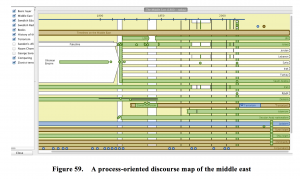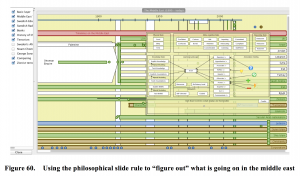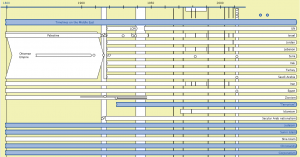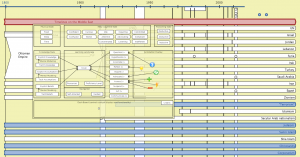This page is a sub-page of our page on NSDL (Nya Samarbetsformer i det Digitala Lärandelandskapet)
///////
Related KMR-pages:
• The Learn-Err Model
• The Learner Cockpit
///////
Other relevant sources of information:
• The Path of Protest, The Arab Spring: an interactive timeline of Middle East protests
12 Dec 2010 – 5 Dec 2011, The Guardian, 5 January 2012.
///////
We envision a set of TELL ME Spaces that can augment your experienced reality in a way that can improve your abilities as a knowledge-and-skills worker WITHOUT distracting you from your immediate context. In short, they can help you to become:
• more effective, by indicating what really matters and filtering out less relevant aspects in a complex situation. This will help you to do better things.
• more efficient, by aiding you in the process of doing these things in better ways.
Our training methodology for achieving these aims is to provide visualization tools that allow people to experience important elements of their future tasks in a safe environment where they can explore the risks involved in performing the corresponding real tasks and receive guidance and (simulated) experience on how to minimize them:
A natural first focus of the TellMe Spaces will be the domain of safety. Here we will make use of communications protocols such as Open Safety in order to transmit safety-related information “in manufacturing lines, process plants, or similar industrial environments” . We will adopt the approach of individual and organizational double-loop learning (Kim, 1996). An important goal is to show that being safe is not the same as being wasteful or ineffective/inefficient. Our plan here is to establishment the non-wastefulness of safety by focusing on modeling the wastefulness of non-safety.
In the next phase TellMe Spaces will become configurable to multi-agent activities, where different aspects of a collaborative activity can be augmented from different perspectives by people wearing different filtering maps in their TellMeSpace. We are aiming to address the challenge of explaining to trainees “how we do things around here” by making use of insights and tools from research into story telling and hermeneutics in order to support the “gleaning of fragments of meaning”. This could be an excellent aid for a newly employed to walk around a company with goggles that highlight organizational semantics by indicating what the current group or department is doing and how it is contributing to the overall value-creation process of the company.
Specifically we are planning to apply an extended version of the model of the philosophical slide rule that is being explored within the Swedish cultural heritage domain as an interface to what is called a space-time knowledge explorer. Looking at a complex domain through an explicit knowledge-filtering map provides a way to focus on the corresponding aspects of the situation. An example of this kind, dealing with the evolving discourse of the middle-east, is shown in Figure 59 and Figure 60.
Methodologically we are talking about creating separate views and comparing them in retrospect. This is important to avoid disruptive influences on the immediate personal context. I create my view and you create yours. The fact that both of us have access to both views has the potential to create positive synergy between us, i.e., situations where “we > me + you”.
By shifting the slider along the timeline and using the maps as semantic filters, we can look for constrained connections of various types with respect to information in the underlying database (similar to Wolfram Alpha). We can also experiment with different time models, such as the two different time-concepts of Aristotle: chronos (chronological time) and kairos (opportune time). The latter time concept is of fundamental importance in opportunistic collaboration, which is all about taking advantage of an unexpected window of opportunity. This is reflected in the old saying that “timing is everything”.
////////



